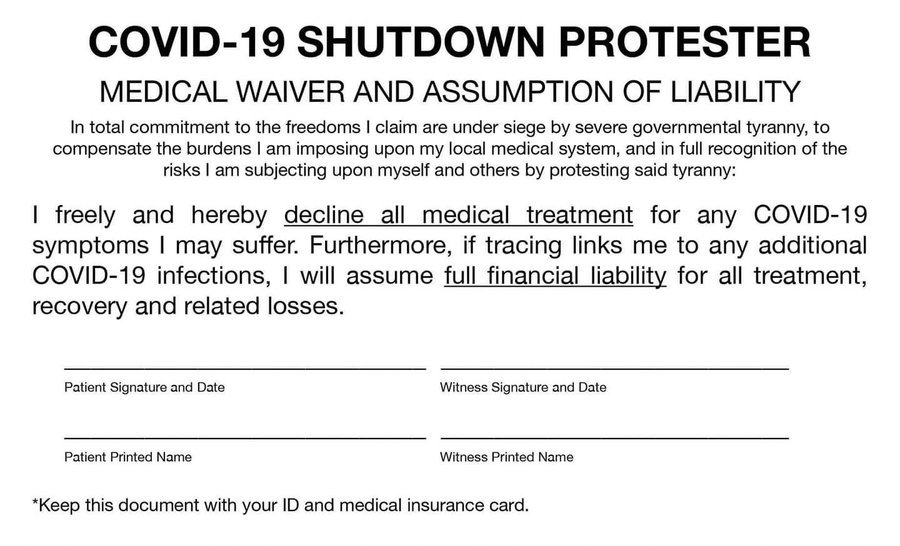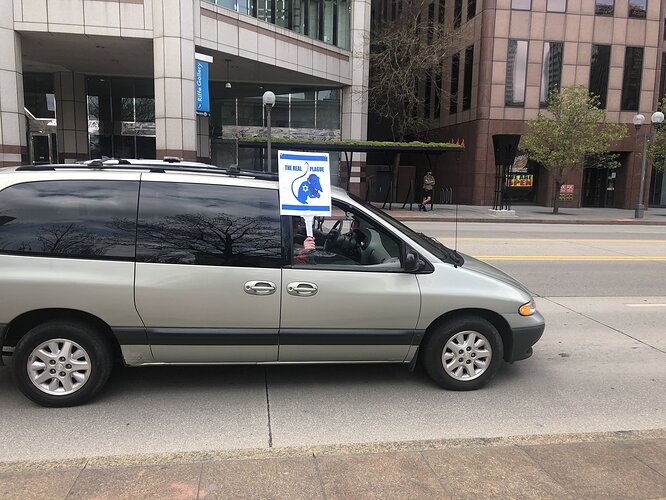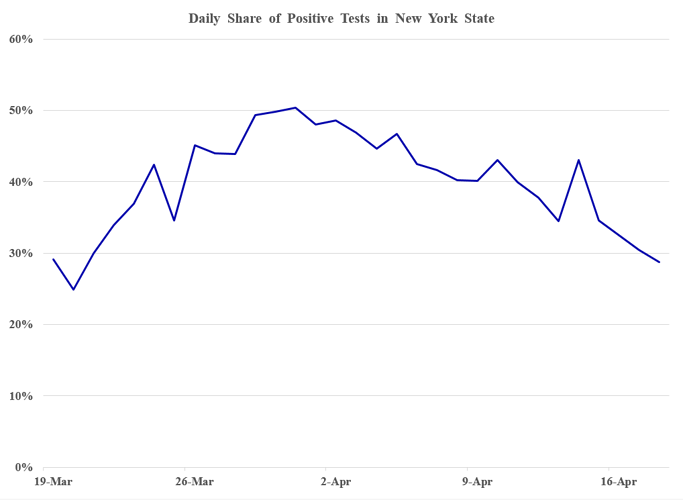Are those tiny books, a huge head, or just a trick of perspective?
https://mobile.twitter.com/Craig_A_Spencer/status/1251719174231072770
https://mobile.twitter.com/Craig_A_Spencer/status/1251719177498492929
https://mobile.twitter.com/Craig_A_Spencer/status/1251723658843783169
Probably ponied here… @Danspartan
I hadn’t seen that specially. I’m supposed to be offline today but the wife is inside an (empty) building dropping something off.
Good find. I assume an MD MPH knows his shit.
It’s from Mehdi Hasan twitter account… He usually gets good information…

New York State update (stats from Cuomo)
Recent daily deaths
April 8: 799
April 9: 777
April 10: 783
April 11: 758
April 12: 671
April 13: 778
April 14: 758
April 15: 606
April 16: 630
April 17: 540
April 18: 507
Obviously the Jews fault that he’s an adult man who can only get around town riding shotgun in his mom’s minivan.
Possibly some good news for @anon38180840 and others with asthma:
One might anticipate that patients with chronic respiratory diseases, particularly chronic obstructive pulmonary disease (COPD) and asthma, would be at increased risk of SARS-CoV-2 infection and more severe presentations of COVID-19. However, it is striking that both diseases appear to be under-represented in the comorbidities reported for patients with COVID-19, compared with the global burden of disease estimates of the prevalence of these conditions in the general population (table); a similar pattern was seen with SARS.
But not great news for me and other diabetics:
By contrast, the prevalence of diabetes in patients with COVID-19 or SARS is as high as or higher than the estimated national prevalence, as might be expected
Not sure if they mean Type 1 or Type 2 diabetes or both. A lot of reporting blends these two diseases together, unfortunately.
Full two-page report here:
https://www.thelancet.com/action/showPdf?pii=S2213-2600(20)30167-3&referringSource=articleShare
This would seem to make sense when pared with evidence that obese people have a much worse chance of surviving, since many obese people also have some level of diabetes.
Yes, if they mean Type 2 diabetes that makes sense.
As have I this year - strangely, for the first time in 35 years. Went to get an inhaler as insurance. Hope your boys have too.
Or maybe whatever is different about their immune systems is protective.
Asthma incidence is linked to then hygiene theory.
- Human immune system evolved when we had early life exposure to a dirty environment. Caves, grass and mud huts etc.
- Today people at a young age are in very clean almost sterile environs. The immune system does not get the early training it needs
- When they get exposed at a later age there immune system reacts in a negative fashion and hence allergies and asthma.
—lots of support from people being raise w pets and on farms having lower incidence.
How that would be protective for Cv I don’t know. As with many bio systems, something that is an disadvantage in one system is a advantage under different conditions. If so In this probably by chance in this case as I can’t fathom an evolutionary advantage.
The classic is sickle cell. Two bad copies and you are stroking out from the misshapen blood cells. Two good copies, no strokes but malaria loves you. One good and one bad. Malaria doesn’t like you, your oxygen carrying is depressed but much better than two bad or two good if love in a malaria zone. Sucks if you leave in non malarial zones.
I think Marty’s theory has credibility as well.
I’ve also noted here that my seasonal allergies and stuffiness are way down even though everything is in bloom and pollen counts are going up.
I speculating that the lack of challenge from “other people’s diseases) is keeping my immune system in a low gear and not over reacting to the pollen. I guess that could fit w Marty too. Asthma people’s immune system tend to be set to overreact to try and expel from the lungs. Could be protective.
Interesting stuff ITT again.
Back to screen off time.
Live video of protests in San Diego.
You know when you’re protesting ur freedoms in front of multimillion dollar beach front homes??? This is so embarrassing.
Score one for growing up in the 70s around tons of pets, farms, dirty hippies. Also I remember whenever I went to Odessa, MO I would get diarrhea. I think we finally figured out it was something in their water. Anecdotally I do have a strong immune system.
The world’s dumbest motherfuckers, on parade.
If you actually read this article, Japan is doing things very weirdly. A big part of their problem seems to be due to their policy of using hospitals as quarantine zones:
Japan has been limiting testing for the coronavirus mainly because of rules requiring any patients to be hospitalized. Surging infections have prompted the Health Ministry to loosen those rules and move patients with milder symptoms to hotels to free up beds for those requiring more care.
Also unlike the US apparently hospitals can reject cases, but even in non-Covid times it’s not that uncommon:
In March, there were 931 cases of ambulances getting rejected by more than five hospitals or driving around for 20 minutes or longer to reach an emergency room, up from 700 in March last year. In the first 11 days of April, that rose to 830, the Tokyo Fire Department said. Department official Hiroshi Tanoue said the number of cases surged largely because suspected coronavirus cases require isolation until test results arrive.
With about 10,000 cases and 170 deaths, Japan’s situation is not as dire as New York City’s which has had more than 10,000 deaths, or Italy’s, with more than 21,000 fatalities, according to Johns Hopkins University.
But there are fears Japan’s outbreak could become much worse.
New York was getting 10k new cases a day at one point. If anything, in a country with so many massive population density cities like Japan, this is a huge indication that whatever they were doing wrt to social distancing, masks, cleanliness, etc. is working pretty well. Although maybe not well enough to support their plans to use hospitals to quarantine all patients.
The outbreak has highlighted underlying weaknesses in medical care in Japan, which has long been praised for its high quality insurance system and reasonable costs. Apart from a general unwillingness to embrace social distancing, experts fault government incompetence and a widespread shortage of the protective gear and equipment medical workers need to do their jobs.
Japan lacks enough hospital beds, medical workers or equipment. Forcing hospitalization of anyone with the virus, even those with mild symptoms, has left hospitals overcrowded and understaffed.
The “collapse of emergency medicine” has already happened, a precursor to the overall collapse of medicine, the Japanese Association for Acute Medicine and the Japanese Society for Emergency Medicine said in a joint statement. By turning away patients, hospitals are putting an excessive burden on the limited number of advanced and critical emergency centres, the groups said.
“We can no longer carry out normal emergency medicine,” said Takeshi Shimazu, an Osaka University emergency doctor.
One thing I’ve learned in all this is that when hospitals, mayors, governors sound the alarm - it’s for good reason, and they’re doing exactly what they should be doing. But it’s often of the “we’re driving towards the edge of a cliff if we don’t do something soon” variety. And then at that point that by making so much noise they often get the help they need. Sounds like in this case hospitals need more PPE and the govt needs to change their quarantine policy.
I mean, I know you pop up every time to stick up for your jbro bro jman (though you might be his gimmick?), but someone changing their allegiance to Bloomberg shows that they still don’t get it.




